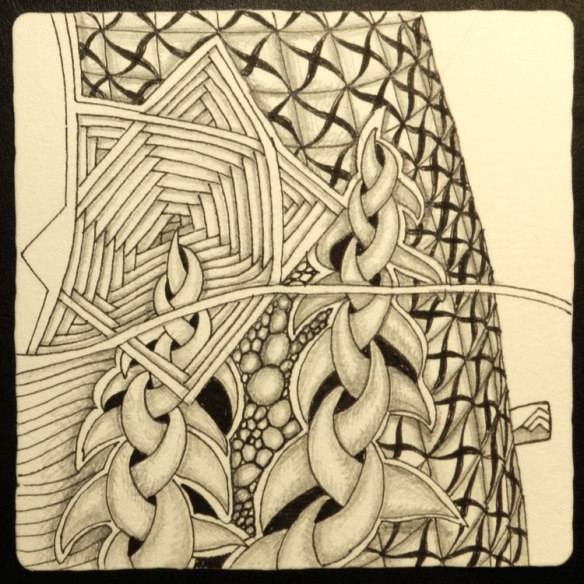On June 1, Maria Thomas and Rick Roberts introduced us to a new idea in their newsletter and on the Zentangle blog. It’s a simple idea: start with a square. In the square, you draw what they call a grid seed. Then you repeat! The fun happens as you see the lines and shapes that unfold when your squares sit next to each other in a grid.
Rick and Maria offer us 50 grid seeds. You can use them as-is, or alter them, or make up your own. I really like this! So did diva Laura Harms, who incorporated it into her weekly challenge 122.
In my first tile (above), I wanted to try out a bunch of grid seeds. I used Maria’s F-3 and F-4, tangellations of A-5 and I-2, one I created myself, and tossed in some knightsbridge and paradox, which are grid-based all on their own.
I really liked the pattern that sprouts and interrelates within the grid using F-3, so I used it again, this time (above) altering the grid so it appears to wrap around a cylindrical form. I also used punzel, auraknot, and tipple.
 Finally, in the bottom left area I decided to separate the grid squares (there’s F-3 again), and added another grid seed with some radiating spokes, and used paradox, hollibaugh, leaflet, shattuck, and krli q’s on the rest of the tile.
Finally, in the bottom left area I decided to separate the grid squares (there’s F-3 again), and added another grid seed with some radiating spokes, and used paradox, hollibaugh, leaflet, shattuck, and krli q’s on the rest of the tile.
I think this grid seed idea really opens up a lot of possibilities!







